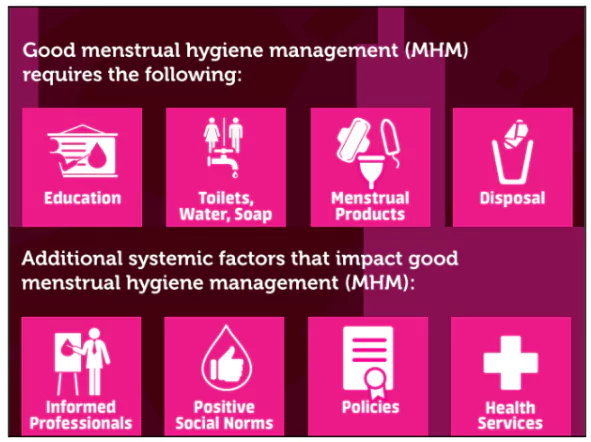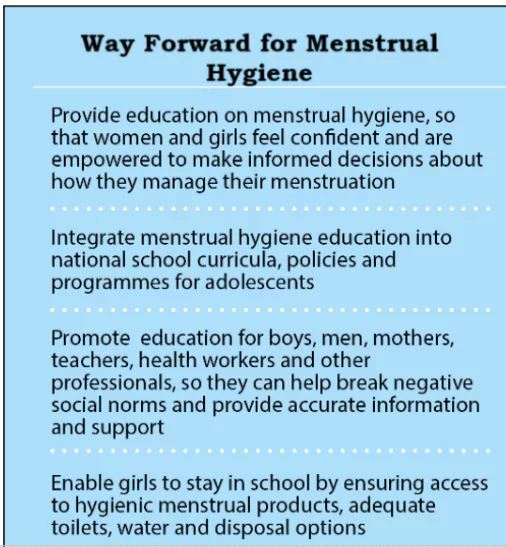![]() 14 Dec 2023
14 Dec 2023
Context: The Union Ministry of Health and Family Welfare has formulated a draft menstrual hygiene policy.
 Menopause: It marks the end of reproductive years and most women experience it between the ages of 45 and 55 years.
Menopause: It marks the end of reproductive years and most women experience it between the ages of 45 and 55 years.Challenges Associated with Menstrual Hygiene in India:
|
|---|
 Develop clear, concise, and culturally appropriate messaging that addresses the specific needs and concerns of target groups, using inclusive language to avoid stigmatizing menstruating individuals.
Develop clear, concise, and culturally appropriate messaging that addresses the specific needs and concerns of target groups, using inclusive language to avoid stigmatizing menstruating individuals.News Source: MoHFW

<div class="new-fform">
</div>